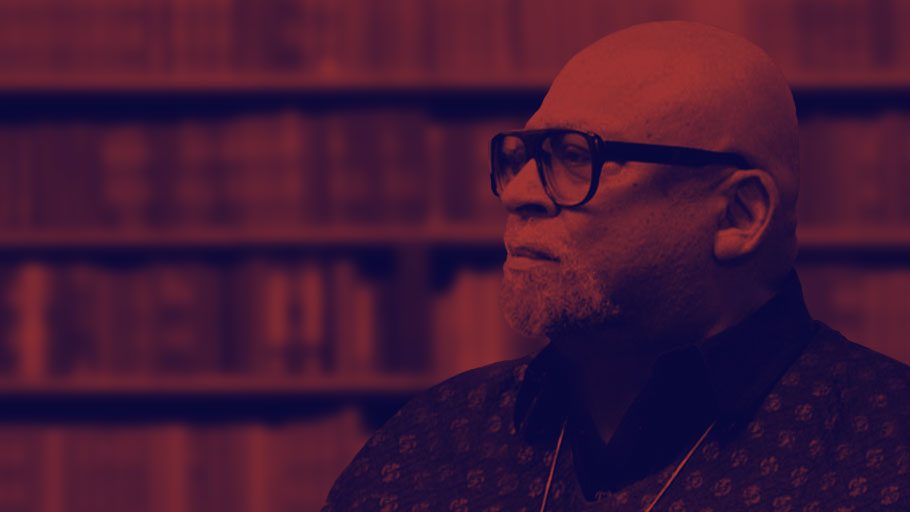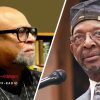It is a strange but constantly occurring thing, the tendency to appropriate our history and culture as simply another expression of the self-congratulatory narrative the American established order has so relentlessly and religiously disseminated of itself. So our history of deadly serious and ceaseless struggle to free ourselves and be ourselves and to live good and meaningful lives is transformed into an anesthetizing dream and make-believe drama about America, clearly flawed but self-corrective, moving steadily away from its wild west, enslaving east and everywhere oppressive ways.
It is an America which reduces a freedom movement to a man and a man of serious moral concerns and commitments to a manipulated symbol of social peace without justice or the struggle to achieve it. And it is an America which turns a historic march into mixed and merged memories, stripped of the very people whose righteous struggle made the Movement, the March and the man possible and whose history and current needs and emancipatory aims require and encourage continuing and uncompromising struggle.
No, the fight is in no way finished; and as Paul Robeson reminded us, “the battlefront is everywhere; there’s no sheltered rear”. And certainly the battleground of history is a key site of contestation and struggle. Our history, Mary McLeod Bethune says, teaches us that “we are heirs and custodians of a great legacy” and we must bear the burden and glory of that legacy with strength, dignity and determination. But we cannot do this if we do not take ourselves seriously; if we let others, no matter how well meaning, reshape our minds and memories so that we are no longer the subject and center of our own history, the ultimate and authoritative tellers and interpreters of what we’ve done and do. Surely, Marcus Garvey gives us enduringly valuable instruction when he teaches us “Our history is too important to be left in alien hands”. And this counts especially for our oppressor who cannot be our teacher.
And the commemoration of the March on Washington comes as a readily available and convincing case in point. The established order’s misinterpretation, manufacturing and manipulation of the history and memoires of the March begins with diverting almost all conversation and media coverage to a discussion of Dr. Martin Luther King’s “I have a Dream Speech”. This, of course, allows them to define and create a diluted and adulterated “reality” that allows even the Right to embrace a reconstructed King and claim appreciation of him and the March now narrowly defined and focused. For unrevised, they could not accept or concede, King’s real critique of America as racist, materialistic and militaristic; the greatest purveyor of violence in the world; and an unrepentant bouncer of bad checks. Nor could they agree to his contention that we have both the right and responsibility to rebel against unjust laws.
This over-focus on King’s speech at the March also overlooks and minimizes the indispensable role of A. Phillip Randolph, who with his co-workers, Bayard Rustin and Anna Hedgeman, conceived, planned and led the March. It leaves out Randolph’s early proposal of a March on Washington in 1941 and the history of his skilled organizing, union building and struggle for civil rights. It omits the brilliance of Bayard Rustin’s mind and work in organizing, pacifism and civil rights. Likewise, it gives no space to Anna Hedgeman’s impressive planning, organizing, issue-framing, coalition-building and dedicated womanist defense and promotion of the rights of women. And it leaves out other leaders and organizers.
Likewise, such a narrow focused history on King, omits the key role the Black press and radio played in mobilizing the masses, a role they have historically played and continue to play even with less capacity. Also, such a King speech focus keeps us unfamiliar with the actual demands of the March within the larger framework and call for “Jobs and Freedom”, i.e., demands for federal legislative, labor, education, training and housing initiatives to end discrimination and provide openings and opportunities for Black progress which Randolph read and for which Rustin led a mass pledge of those present to go back to their communities and struggle to achieve.
And finally, such a narrow and pliable focus on a man, rather than the Movement and its larger and detailed demands; and the awesome task of organizing such a massive gathering, minimizes the indispensable role of our people. Thus, rightly remembered and read, the March must be seen as due commemoration of the Black Freedom Movement in its Civil Rights phase that, in 1965, would transform into its Black Power phase. The significance of the March lies first in its role and reality as a testimony to the strength, resilience and relentless struggle of our people for good in society and the world. It was a massive act of rejection and resistance, to segregation, exploitation and oppression; a Black united front of Civil Rights, Black Women’s, and labor organizations, and the masses of every kind—farm, factory and domestic workers and the unemployed; public employees; activists; celebrities; artists; educators; politicians; clergy; and everyday people. And it also represented a national multiracial coalition. Moreover, it was a reaffirmation of our dignity as a people, a loud and assertive refusal to be silent in our suppression or accepting of the violation of our rights.
Furthermore, it was a public demand for a life of dignity and decency in this country for freedom, jobs and security of our person and people. Also, the March demonstrated respect for Frederick Douglass’ teaching that “If there’s no struggle, there’s no progress. For power never yields without demand. It never did and it never will”. And finally, the March on Washington, like its larger successor, the Million Man March and all the marches and struggles before and after, was and remains an enduring legacy and ongoing call for us and future generations to continue the struggle and build the just and good society and world we all want and deserve to live in.
In going forth then, let us remember and respond rightfully and creatively to A. Phillip Randolph’s compelling and uplifting opening speech. In it he tells us and the world that a social and moral revolution must be waged and achieved, that “the sanctity of private property takes second place to the sanctity of the human personality”, and that “it falls to (Black people) to reassert this proper priority of values…demand new forms of social planning”, put technology at the “service of human needs” and stand steadfast “in the forefront of today’s movement for social and racial justice”.
Dr. Maulana Karenga, Professor and Chair of Africana Studies, California State University-Long Beach; Executive Director, African American Cultural Center (Us); Creator of Kwanzaa; and author of Kwanzaa: A Celebration of Family, Community and Culture and Introduction to Black Studies, 4th Edition, www.OfficialKwanzaaWebsite.org; www.MaulanaKarenga.org.















